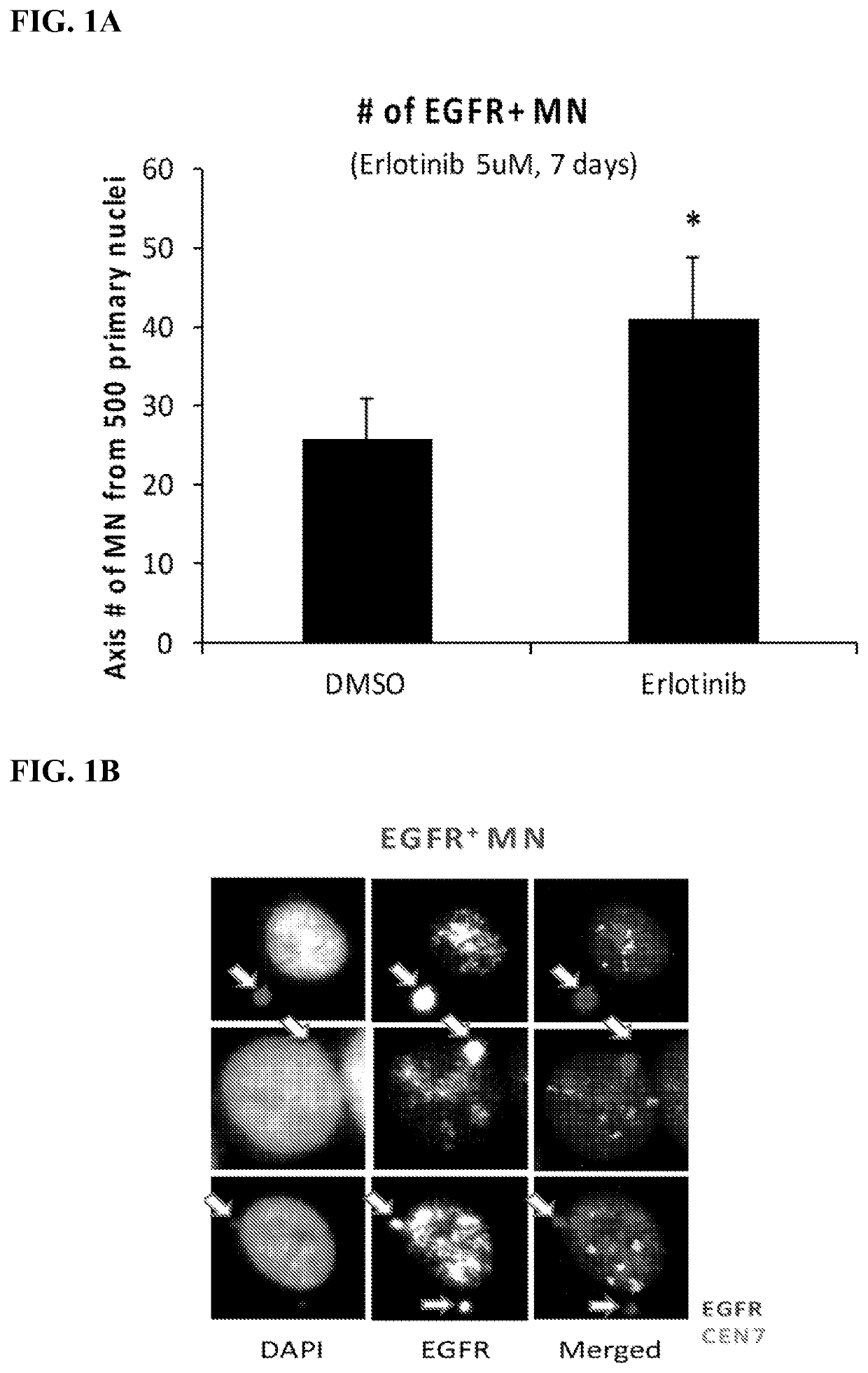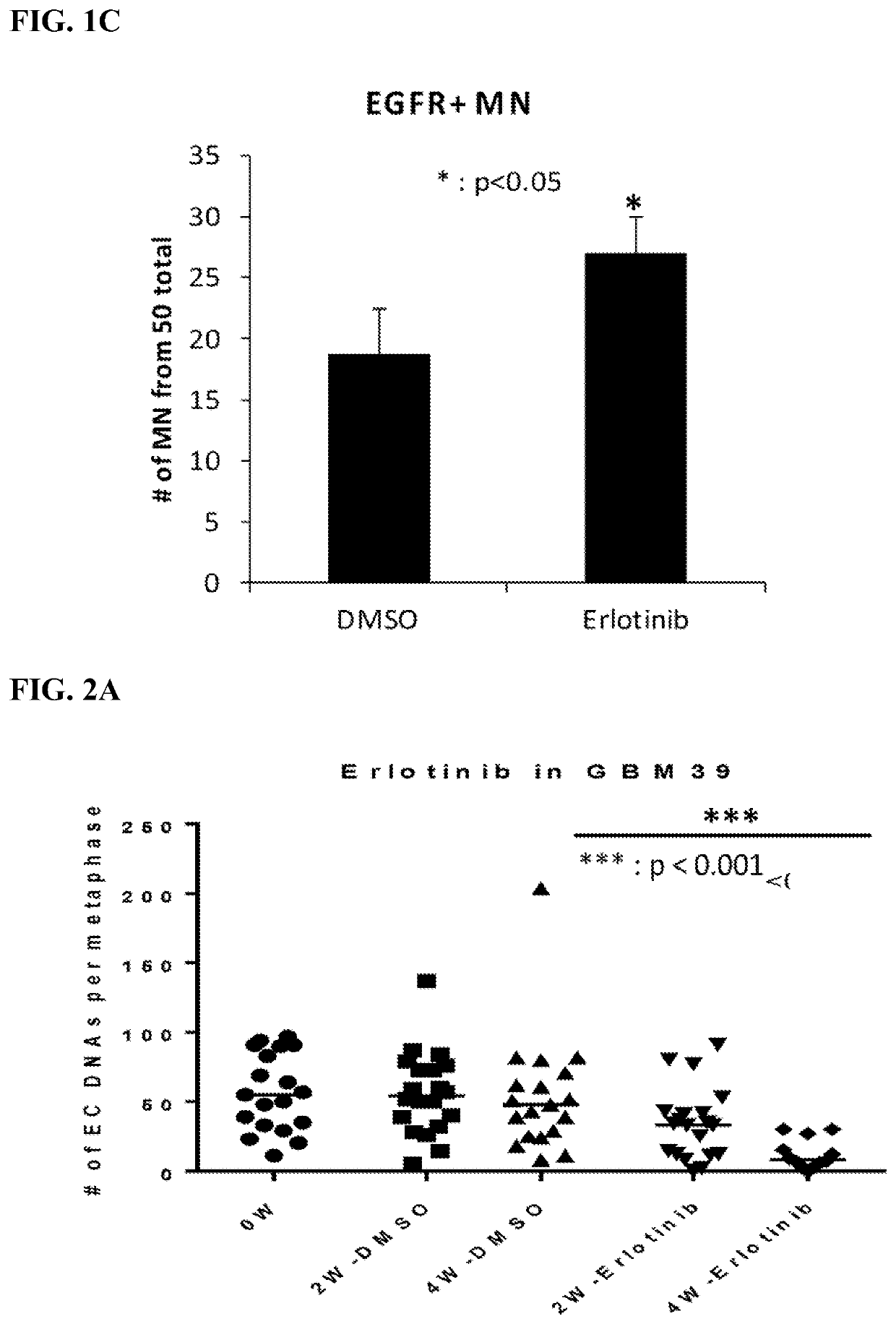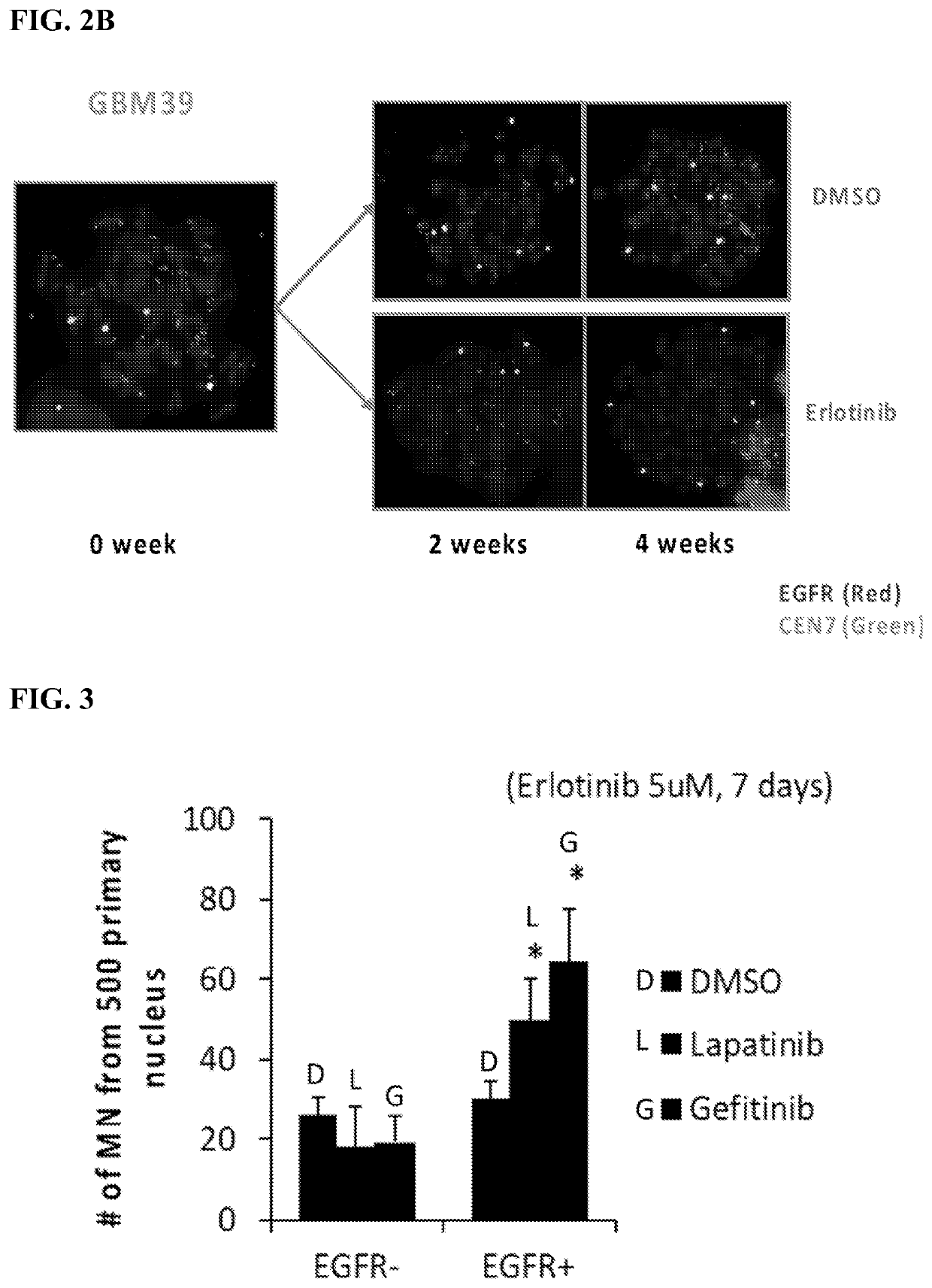Methods of treating extrachromosomal DNA expressing cancers
a cancer and extrachromosomal dna technology, applied in the field of methods of treating extrachromosomal dna expressing cancers, can solve the problems of inability to accurately quantify the scope of ecdna in cancer and the impact of ecdna on tumor evolution,
- Summary
- Abstract
- Description
- Claims
- Application Information
AI Technical Summary
Benefits of technology
Problems solved by technology
Method used
Image
Examples
example 1
Methods of Targeting Tumors with Copy Number Alterations Based on Unique Vulnerabilities in the Processes of DNA Replication, DNA Repair and Cellular Metabolism that are Generated by the Presence of Extrachromosomal Oncogene Amplification
[0181]We recently made the discovery that the most common genetic drivers of cancer, amplified oncogenes, which are also compelling targets for drug development, are not found on their native chromosomal locus as they are shown to be on the maps produced by The Cancer Genome Atlas (TCGA) or International Genome Consortium (ICGC), but rather, on circular extrachromosomal DNA (Turner et al., Nature, 2017), enabling malignant tumors to rapidly develop, diversify and resist treatment. We reported that: 1) all of 17 different cancer types studied displayed evidence of having oncogene amplification on extrachromosomal DNA; 2) nearly half of human cancers possess amplified oncogenes on circular extrachromosomal DNA and 3) most commonly amplified oncogenes ...
example 2
Experimental Design
[0193]
[0194]Measurements for Experimental Design: 1) ecDNA number (ecDETECT, Nature, 2017), 2) oncogene number (ecDETECT), 3) histograms to quantify shifts, and 4) micronuclei (MN) number and DNA content.
REFERENCES
[0195]1. Vogelstein, B. et al. Cancer genome landscapes. Science 339, 1546-1558, doi:10.1126 / science.1235122 (2013).
[0196]2. Stark, G. R., Debatisse, M., Giulotto, E. & Wahl, G. M. Recent progress in understanding mechanisms of mammalian DNA amplification. Cell 57, 901-908 (1989).
[0197]3. Schimke, R. T. Gene amplification in cultured animal cells. Cell 37, 705-713 (1984).
[0198]4. Fan, Y. et al. Frequency of double minute chromosomes and combined cytogenetic abnormalities and their characteristics. J Appl Genet 52, 53-59, doi:10.1007 / s13353-010-0007-z (2011).
[0199]5. Nowell, P. C. The clonal evolution of tumor cell populations. Science 194, 23-28 (1976).
[0200]6. McGranahan, N. & Swanton, C. Biological and therapeutic impact of intratumor heterogeneity in ...
embodiments
[0255]Embodiment 1. A method of treating cancer in a human subject having or being at risk of developing cancer, said method comprising administering to said human subject an effective amount of a DNA repair pathway inhibitor, thereby treating cancer in said subject, wherein said human subject has been identified as having an amplified extrachromosomal oncogene.
[0256]Embodiment 2. The method of embodiment 1, said method comprising prior to said administering, detecting an amplified extrachromosomal oncogene in a cancer cell in a first biological sample obtained from said human subject by contacting said biological sample with an oncogene-binding agent and detecting binding of said oncogene-binding agent to said amplified extrachromosomal oncogene.
[0257]Embodiment 3. A method of treating cancer in a human subject in need thereof, said method comprising:[0258](i) detecting an amplified extrachromosomal oncogene in a cancer cell in a first biological sample obtained from a human subjec...
PUM
| Property | Measurement | Unit |
|---|---|---|
| Heterogeneity | aaaaa | aaaaa |
| Time | aaaaa | aaaaa |
Abstract
Description
Claims
Application Information
 Login to View More
Login to View More - R&D
- Intellectual Property
- Life Sciences
- Materials
- Tech Scout
- Unparalleled Data Quality
- Higher Quality Content
- 60% Fewer Hallucinations
Browse by: Latest US Patents, China's latest patents, Technical Efficacy Thesaurus, Application Domain, Technology Topic, Popular Technical Reports.
© 2025 PatSnap. All rights reserved.Legal|Privacy policy|Modern Slavery Act Transparency Statement|Sitemap|About US| Contact US: help@patsnap.com



